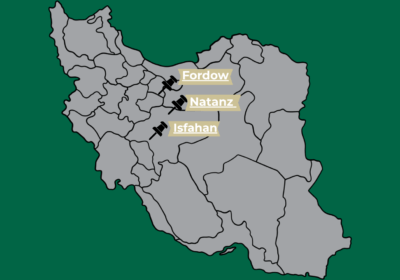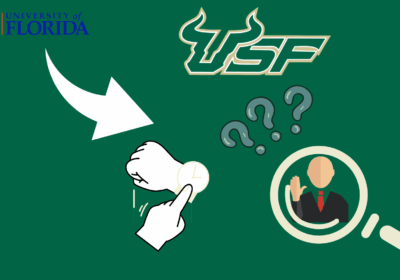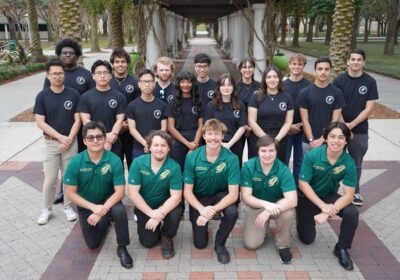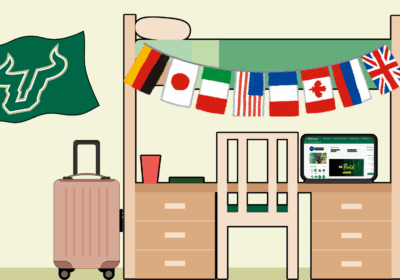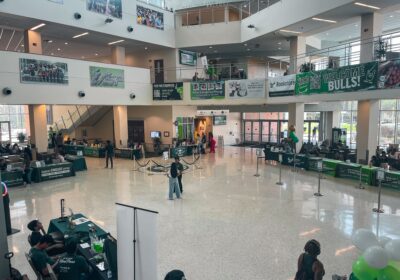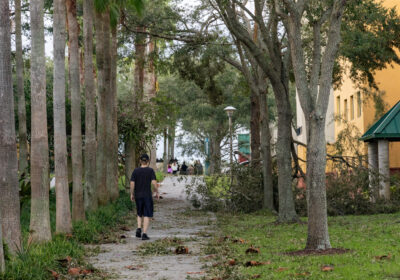The apocalypse now
No, it’s not 2012, but if you’ve seen people with bandanas on their arms and heads running around campus, you probably witnessed the newest USF game: humans vs. zombies.
It’s a new trend on college campuses, even gaining enough notoriety to be called the “No. 1 threat to America” by Stephen Colbert on the ‘’Threat Down” portion of his show.
The USF version was inspired by FSU’s, started by Angel San Martin, who was directed to humansvszombies.org by a fraternity brother. Since then, FSU has had four campus-wide games and is closing in on 500 participants for the next round.
Zachary Cornett, one of the student who originally brought the game to USF and an admin for the Facebook group, said he hopes to get administration and University Police involved next year.
Humans wear bandanas around their arms, zombies around their heads. To infect a human, a zombie must tag them and take their ID card, an index card displaying a number that tracks the person online and should be carried at all times.
A zombie then registers that number online to feed themselves and two other zombies for 48 hours.
Human take shelter in a building, which act as a safe zones, or stun a zombie with a rolled-up sock. Zombies hit with a sock are out of the game for 15 minutes.
Nerf guns are allowed between 5:30 p.m. and 6 a.m. near Holly, Maple and Sycamore drives.
To help you better understand the predicament participating humans at USF faced this week, I dived headfirst into the battle and documented my progress.
Day 1: Monday
9 a.m.
The war began at midnight.
So far, the most difficult task has been tying the human-identifying band around my own arm and finding several clean pairs of socks. Looking online tells me one of my friends has already been turned to the zombie side.
1:40 p.m.
As I head for safety in my car after school, a group of students look at me and question aloud, “Is she a zombie?” My white headband confuses several other students throughout the day. I check on my friends’ whereabouts via their Facebook statuses to see if they’re still alive.
One friend posts she was ambushed outside the Marshall Student Center (MSC). But she was prepared, and the zombies were no match for her arsenal of socks. Another friend locked herself in her dorm room. I receive an e-mail telling me that a scientist has discovered a possible cure and any humans interested should meet at 4 p.m. in the MSC to escort him to the Library for further research.
I decide it could be a trap and don’t go.
5 p.m.
I’m back on campus for the evening and paranoia is starting to take over. I call my friend who barricaded herself in Maple Hall, and she tells me that Cooper Hall and MSC seem to be zombie hot spots.
As I’m walking to work, my eyes constantly shift left and right, surveying my surroundings. Every girl in a headband suddenly makes me jump. I’m afraid of people in hats – they may be hiding bandanas.
In the Student Services Building, two students use each other for target practice with Nerf guns and try to find more ammo before 5 p.m., when their plastic weapons are permitted.
Day 2: Tuesday
9 a.m.
I wake up to find that it stormed through the night and nearly a fourth of the 463 original human players are infected. More than 100 zombies now roam the campus. I spend some time rooting through the laundry machine to find more arsenal, then leave for campus.
2 p.m.
On my way to class, I pass three zombies. One is distracted talking to an unparticipatory friend. Another is a safe distance away from me and a third zooms by on a bike. Luckily, I go unnoticed by all three.
3:30 p.m.
There are 138 zombies plaguing USF as I travel to Juniper-Poplar Residence Hall to meet with Tim Mastic, a sophomore majoring in business managment information systems, and a human ally. He meets me in the lobby with two human friends, Justin McNabb, a sophomore majoring in geology, and Keven Vaughn, a junior majoring in electrical engineering, who escaped a zombie attack this morning.
He said one zombie faced-off against him in front of MSC. After avoiding Vaughn’s first sock, he lunged and tagged Vaughn but not before being hit with a second sock.
Mastic and McNabb are Green and Gold Guides for USF. When giving a tour Monday, Mastic said he, a mom and a son witnessed five humans face-off against a dozen zombies near Cooper Hall. The mom was so excited they stayed to watch two humans become infected and the others be chased into the College of Education (COE).
Vaughn offered this advice: “Stealth is the big (strategy) because unless you’re with a big group of people, there’s no real safety.”
McNabb quoted the first rule of cardio in the film “Zombieland.” He said he was chased from the Chemistry building and survived by outrunning the zombie.
The three allies suggest a safe path back to the other side of campus. As I leave, two zombies – one wearing a surgical mask – eye me from across the street. I pick up my pace as one follows me down the sidewalk, but when I look over my shoulder, he is gone.
Day 3: Wednesday
12:30 a.m.
I spend most of the night at work before venturing to the residence side of campus to meet a friend. Around 9 p.m., I narrowly avoid two zombies at a Coke machine but retreat into a safe building. The cold weather is more of a threat than any zombies, and, with the exception of one human, I make it to my friend’s room and back to my car without meeting anyone.
I check online to see if Mastic survived his night. Seeing he was still on the side of the resistance, I shudder at the number of zombies – more than one-third of the original population.
9 a.m.
The zombie count is at 179 and now includes Vaughn. I brave Cooper Hall, which has finally become unavoidable.
5 p.m.
I survive two zombie encounters near Cooper Hall, taking the long way around COE. Over the past three days, I maintained my humanity. The zombie count now is more than 200. Nearly half of the original players are infected.
This is my last journal entry. Will I survive tomorrow, the final day, and make it to the 4:30 p.m. celebration at Fowler Field? I can only hope.
Good luck, humanity.


